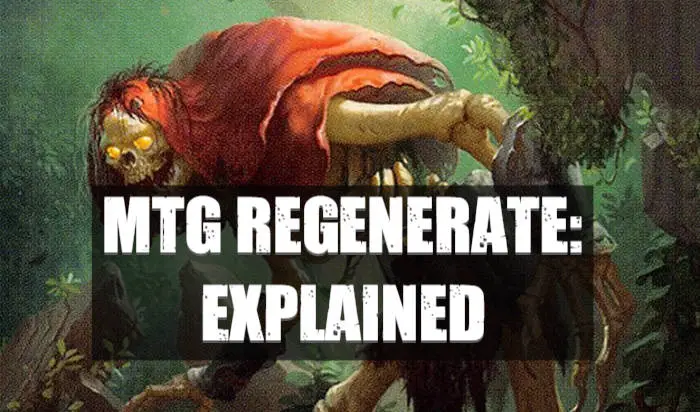Magic: The Gathering is a very complex game for several reasons. One of those reasons is how the plethora of mechanics and abilities all interact with one another. Even the simplest of them can raise questions in certain situations. Today it is the “regenerate” mechanic that we will dive into and answer some of the most commonly asked questions. Let’s start off with the official wording for Regenerate.
Regeneration is a replacement effect that says: “The next time this permanent would be destroyed this turn, it isn’t. Instead tap it, remove all damage from it, and remove it from combat.”
Regeneration is fairly straightforward on the surface. However, as mentioned above all mechanics in MTG can have pretty complex interactions in particular situations and can lead to players having questions. For example, at what speed regeneration can be used, if it causes the creature to leave the battlefield, and how many times you can use it. With that said, we have all this and much more covered below.
What Is Regenerate In MTG?
Regeneration is an effect that replaces the effect of a creature dying the turn regenerate is activated. It says: “The next time this permanent would be destroyed this turn, it isn’t. Instead tap it, remove all damage from it, and remove it from combat.”
Here’s a look at the official wording:
“Regenerate [permanent]” means “The next time [permanent] would be destroyed this turn, instead remove all damage marked on it and tap it. If it’s an attacking or blocking creature, remove it from combat.”
glossary of the Comprehensive Rules 701.15a via mtgfandom.com
How Does It Work?
Regenerate works by essentially saving your creature the next time it would die. So, regeneration must be used before the creature is destroyed to be effective.
So for example, let’s say you have a Will-o’-the-Wisp on the battlefield and your opponent casts a Lightning Bolt targeting it. Assuming you have the requisite black mana to activate regenerate, you could activate it while the Lightning Bolt is on the stack.
If you did, Will-o’-the-Wisp now has “The next time this permanent would be destroyed this turn, it isn’t. Instead tap it, remove all damage from it, and remove it from combat.” So, when the Lightning Bolt resolves and destroys the Will-o’-the-Wisp, it instead is tapped, the damage is removed from it, and it is removed from combat.
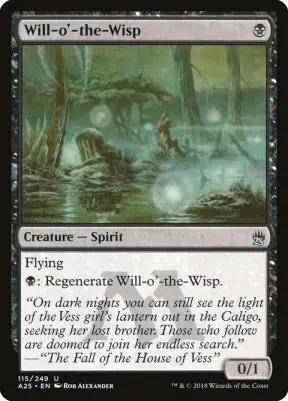
Put another way, regenerate saves your creature from dying the turn you activate it. However, if your opponent has multiple removal spells, you’d have to activate regeneration for each of them since it specifies “the next time…”
Each time you regenerate it, the creature essentially gets a “shield” that lasts until the end of the turn or until an effect would destroy it.
When Can You Regenerate?
Regeneration can be used at any time on either player’s turn. So long as you have the mana to activate it.
How Many Times Can You Regenerate A Creature?
You can use regenerate as many times as you’d like. As long as you can pay for it, there is no limit. This makes it valuable for dodging multiple removal spells.
What Happens To A Regenerated Creature?
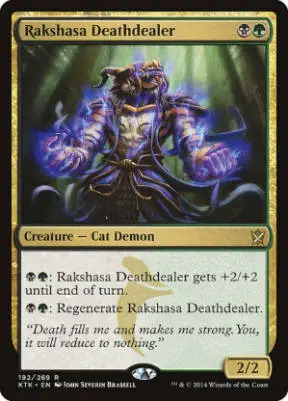
When a creature is regenerated a few things happen, assuming it would be dealt lethal damage. If you activate regenerate and no attempt is made to destroy it, nothing happens.
If the creature would be dealt lethal damage or destroyed at some point in the turn after you’ve activated regeneration, here’s what happens. First, the creature is tapped. Next, any and all damage on it will be removed. Lastly, it would be removed from combat.
This means that any combat damage triggers or damage it may have dealt to opposing creatures will be negated.
Does A Regenerated Creature Leave The Battlefield?
This is a very common question when it comes to Regenerate. The answer here is, no. Regeneration does not cause the creature to leave the battlefield at any point. It’s simply tapped, removed from combat and any damage marked on it is removed.
What Happens To Counters When You Regenerate?
This question is usually asked in relation to the question above when people are under the assumption the creature leaves the battlefield. However, considering this isn’t the case a creature keeps any and all counters on it when you use regenerate.
Furthermore, any auras or equipment that is attached to the creature will remain as well.
How Do You Beat Regenerate?
Opposing creatures having regenerate can make them quite hard to remove and that can cause some serious issues to your gameplan at times. However, there are a few effective ways that you can beat the ability so to speak. Let’s have a look.
Simply playing around the ability can be somewhat effective at times. By this, I mean things like using/saving removal spells when your opponents don’t have the mana to activate their regenerate.
Saving up multiple removal spells can also be effective. Just be sure the threat you’re removing is worth being on the wrong side of a two-for-one situation. With that out of the way, let’s look at a few card categories that can also help.
Exile Effects
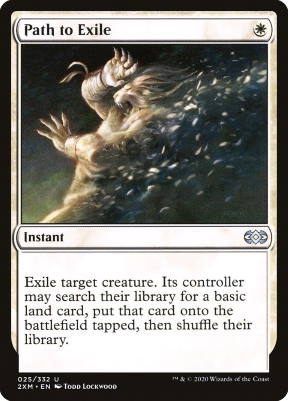
First, removal spells that exile instead of deal damage or say “destroy” are very effective. This is because the creature is being exiled and not destroyed. So, it renders the regeneration pointless. Some examples of quality exile spells include:
Anti-Regeneration Removal Spells
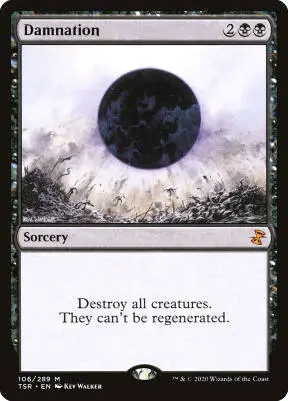
Next, spells that specifically prevent regeneration are obviously very effective. Some examples of such spells are:
Edict/Sacrifice Effects
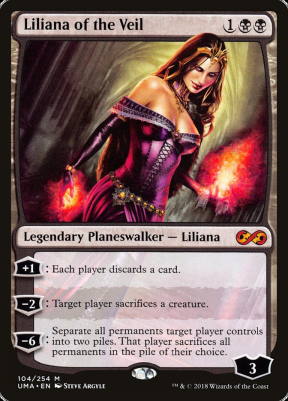
Another effective means to circumvent the protection grated from Regenerate is to use effects that cause your opponent to sacrifice their creatures. Some examples are as follows:
Bounce Spells
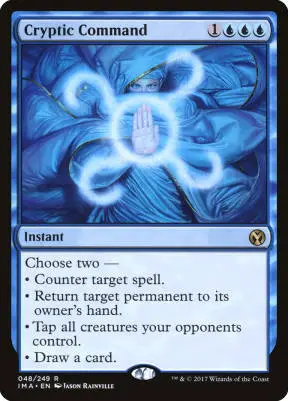
Another nice way to deal with regenerate is to bounce the creature back to the opponent’s hand. This can be achieved with many spells including:
Anti-Activated Ability Spells
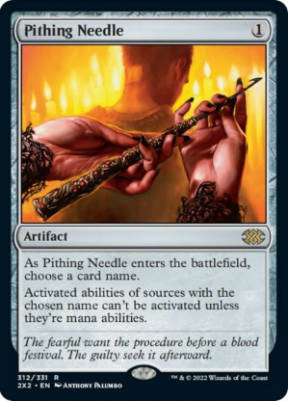
Lastly, Regenerate is an activated ability. So, it can be stopped with cards that can prevent a card from activating its abilities. Some good examples of this type of effect are:
Best Regenerate Cards
We are coming to the end of our discussion about the ability. We have covered just about every question that people ask. So, now that we understand what it is, how it works, and a few ways to stop it, let’s look at the best cards with Regenerate.
7. Nightscape Familiar
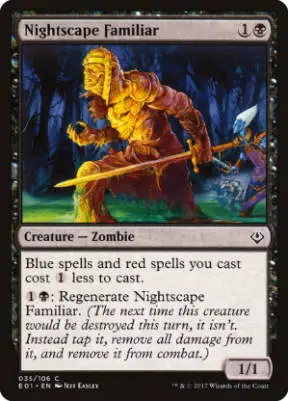
Nightscape Familiar isn’t the flashiest Regenerate card on the list. However, it does have an extremely powerful effect in a format like EDH. Reducing the cost of all spells in two separate colors is huge. Furthermore, it’s not just non-creature spells either; It’s all spells.
With that said, the Regeneration here is huge as the familiar is a lightning rod for removal. The card is obviously at its best in Grixis decks but can also slot into Radkos and Dimir strategies. It also has a relevant creature type to generate some additional upside in Grixis or Dimir Zombie decks.
| Pros | Cons |
| Reduces the cost of spells | Low stats |
| Versatile | Underpowered by itself |
Recommended Formats: Commander
6. Ink-Eyes, Servant of Oni
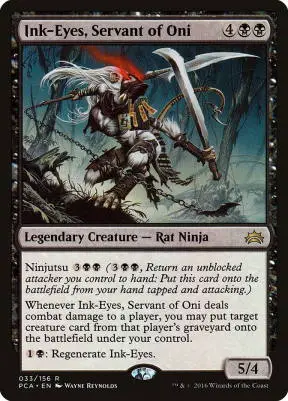
Ink-Eyes, Servant of Oni has quite a lot going for it. First, it has the Ninjutsu mechanic, that allows it to come in and attack unexpectedly. Secondly, five damage is not an insignificant amount of damage to be sneaking in for.
Next, when Ink-Eyes deals damage you get a very powerful reanimation effect that can drastically swing some games. Lastly, as if all that isn’t enough, it does also have the ability to regenerate. Ink-Eyes is one of those cards that it’s very hard to come out on the wrong side of playing.
| Pros | Cons |
| Ninjutsu helps deal damage | Requires some setup |
| Good stats | Higher mana value |
| Powerful reanimation ability |
Recommended Formats: Modern, Commander
5. Wrap In Vigor
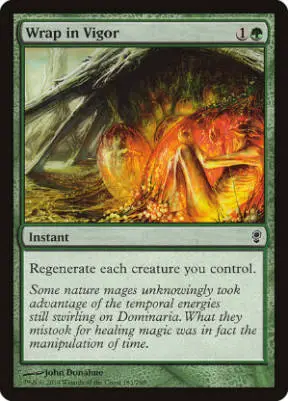
What’s not to like about Wrap in Vigor? For two mana you can regenerate, not a single creature but your entire
When played correctly this two-mana instant can win you quite a few games outright. If you’re in green and have a creature-based strategy you’d to keep on track, look no further than Wrap in Vigor.
| Pros | Cons |
| Protects your whole | One time use |
Recommended Formats: Commander
4. Golgari Charm
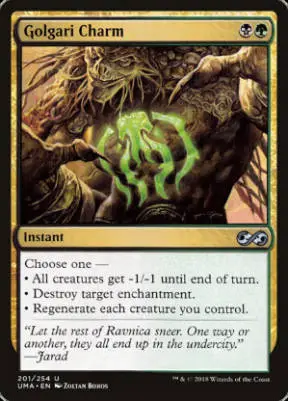
Golgari Charm, like all “charms”, has three modes to choose from. One of them is to Regenerate your entire
Furthermore, this is far from the only relevant mode. The ability to -1/-1 all creatures makes it great against decks playing small creatures or going wide. While the regeneration mode is great versus decks playing lots of removal or sweepers.
Lastly, the ability to blow up an enchantment is a great catch-all ability to have stapled onto an already highly playable card. Between the three, there aren’t a lot of matchups where Golgari Charm will be a dead card. As a result, it sees play in all formats where it’s legal.
| Pros | Cons |
| Versatile | One time use |
| Good against several decks | |
| Good at creating 2-for-1 situations |
Recommended Formats: Modern, Legacy, Vintage, Commander, Pioneer
3. Asceticism
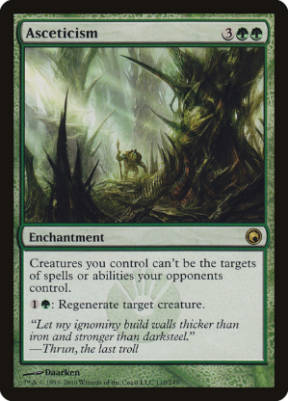
At number three we have our 3rd consecutive non-creature card featuring Regenerate. Maybe you’re seeing the trend here… Regenerating multiple creatures is very powerful. Asceticism allows you to do just that, for a pretty standard rate of two mana per activation.
However, what really makes Asceticism a powerhouse is the fact that it also gives your creatures Hexproof. This is a very hard combination for opponents to get through, assuming you have the mana to pay for regeneration.
| Pros | Cons |
| Gives Hexproof | Mana intensive |
| Can be used multiple times | Higher mana value |
Recommended Formats: Commander
2. Thrun, The Last Troll
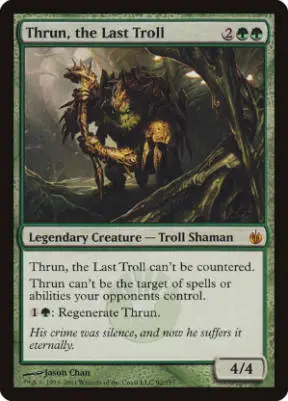
Thrun, the Last Troll is an all-around very hard card to deal with. First, he has a 4/4 body that represents a decent clock in most cases. Next, he is extremely hard to remove from the
If this wasn’t bad enough for control decks he also has the same potent combination of Hexproof and Regenerate. This leaves opposing decks very few ways to answer Thrun. With that said, he has a good enough stat line that his ability to keep himself around makes him a formidable threat whenever he shows up.
| Pros | Cons |
| Good threat | None |
| Can’t be countered | |
| Hexproof and Regeneration |
Recommended Formats: Commander, Modern, Legacy
1. Golgari Gravetroll
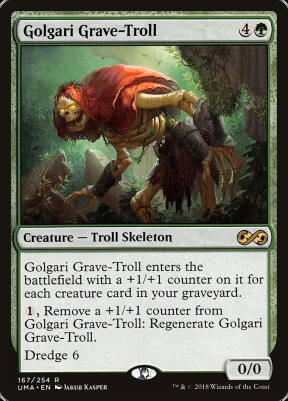
Golgari Grave-Troll sees a ton of play in every format where he’s still legal. First, Dredge six can put a ton of cards into your graveyard. This just so happens to turn the Grave-Troll into a massive threat in most cases, considering his power and toughness scale with the number of creatures in your graveyard. So, he’s very good at working towards his own goals.
Next, he can of course Regenerate by paying a single mana and removing a counter from him. However, it’s his almost unrivaled ability to fill the graveyard that caused him to be banned from Modern, not once but twice. If you play a green graveyard-based deck, you simply can not get more value out of another creature out there.
| Pros | Cons |
| Can be a massive threat | Requires some set-up |
| Fills your graveyard | |
| Payoff & enabler for himself |
End Step
While it’s far from Magic: The Gathering’s most complicated mechanic, Regenerate can be complex at times. Regardless of what side of the mechanic you’re on, if it shows up, it’s probably going to shake the state of the game up in one way or another. With that said, if you had questions about Regenerate, I hope you found the answers here today.
